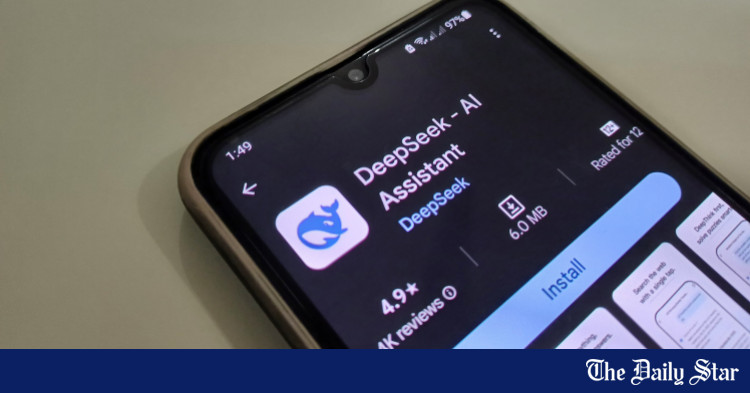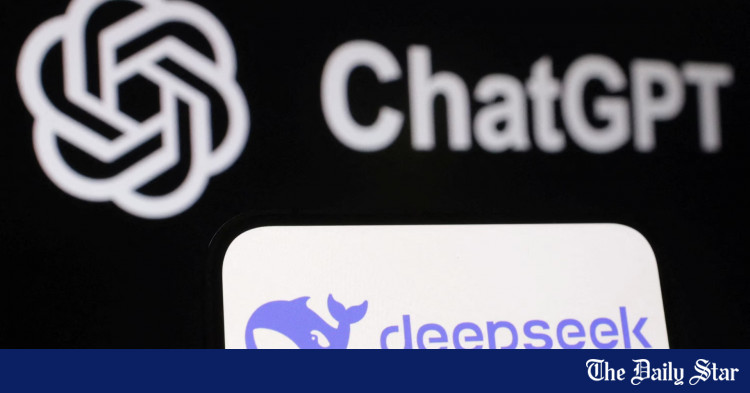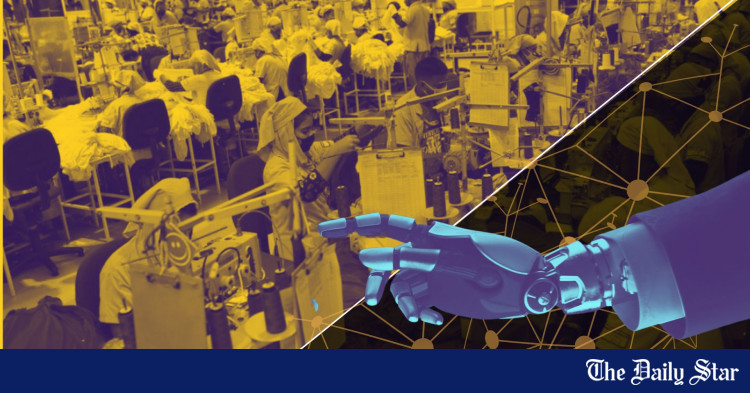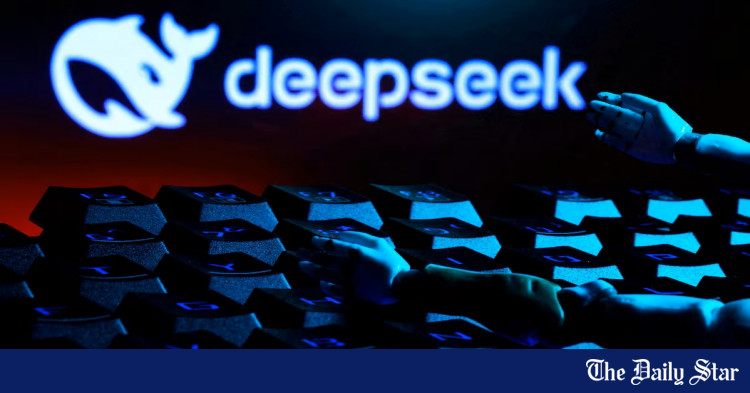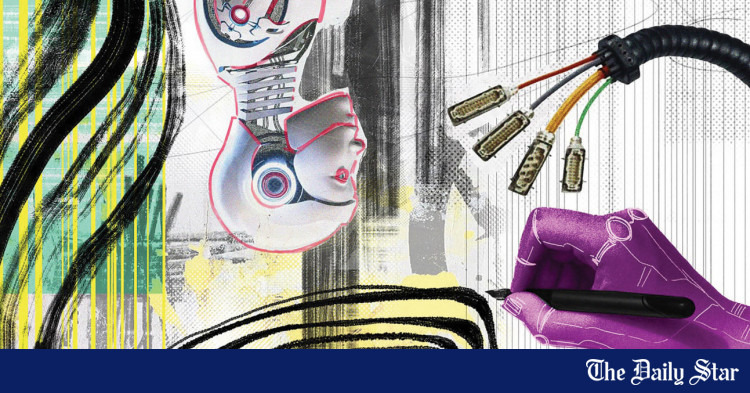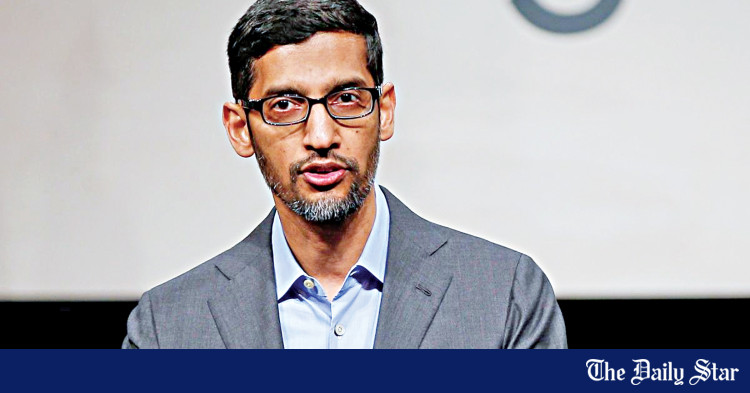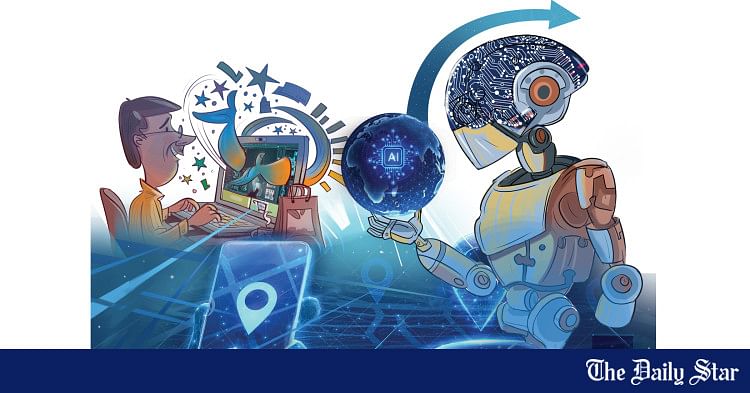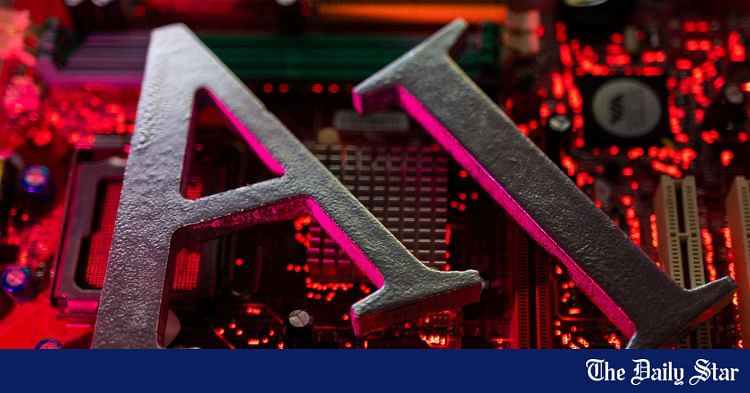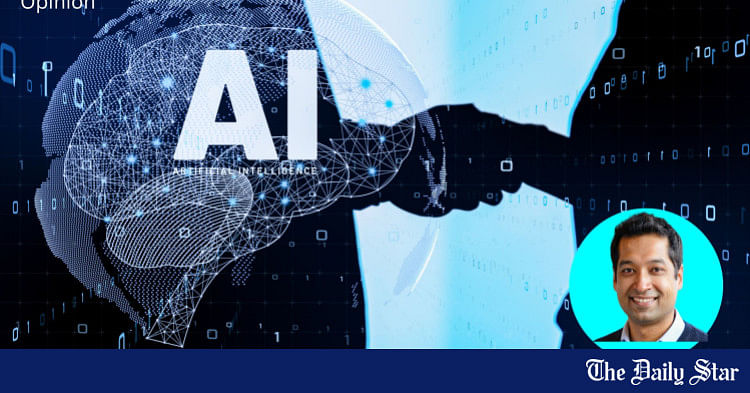Saif
Senior Member
- Messages
- 14,830
- Reaction score
- 7,674
- Origin

- Residence

- Axis Group

- Copy to clipboard
- Thread starter
- #21
Govt service delivery: Task force for using AI, social media
A task force formed by the planning ministry is going to recommend the formation of an independent centre for delivering government services via social media and utilising artificial intelligence (AI).
Govt service delivery: Task force for using AI, social media
A task force formed by the planning ministry is going to recommend the formation of an independent centre for delivering government services via social media and utilising artificial intelligence (AI).
Such proposals came against the context that influence of both social media and artificial intelligence has been on the rise in Bangladesh alongside other parts of the globe.
The 12-member task force, led by KAS Murshid, former director general of the Bangladesh Institute of Development Studies, has finalised a draft report.
The nearly 600-page report will be submitted to Planning and Education Adviser Wahiduddin Mahmud in a couple of days, said ministry officials.
The ministry formed the task force in September last year to develop strategies to boost the economy and mobilise resources for equitable and sustainable development.
The draft report provides strategic recommendations for addressing pressing challenges and facilitating equitable and sustainable development in Bangladesh under the interim government led by Prof Muhammad Yunus.
It emphasises short-term pragmatic interventions and long-term reforms across sectors, addressing economic growth, governance, public service delivery, and environmental sustainability.
The draft report says the name of the centre will be the Centre for Social and Behavioural Change Communication and Research (CSBCC&R).
It added that the establishment of the independent centre is essential to addressing the fragmented nature of current efforts in this critical area.
Currently, various departments handle communication initiatives without a cohesive strategy, leading to inefficiencies, and missed opportunities.
The CSBCC&R would centralise these efforts, providing a structured platform for both traditional media and digital communication strategies.
By merging traditional methods such as community workshops and meetings with contemporary digital campaigns utilising social media and online platforms, the CSBCC&R would create a unified and impactful communication strategy to drive social change, attitudes, norms, and practices.
Regarding AI utilisation, the draft report says a major strategic emphasis is required within key sectors such as education, health, agriculture, and public institutions to facilitate the widespread adoption of digital and artificial intelligence (AI) technologies.
For instance, employing satellite sensing technology can enable effective crop early-warning systems to improve agricultural practices, while distance education can ensure that learning continues uninterrupted regardless of geographical barriers.
"By integrating these advanced technologies, we can enhance quality, efficiency and access across multiple sectors, ultimately improving outcomes for the entire population," said the report.
Moreover, the report says utilising digital and AI technologies effectively would help bridge the existing digital divide.
This involves reducing data costs, increasing access to affordable smartphones -- implemented with appropriate safeguards for age-specific content -- and fostering the growth of a robust domestic software and hardware ICT industry.
"By promoting widespread digital access, we can empower citizens, enhance digital literacy, and stimulate innovation within the ICT sector," the report mentions.
The task force also recommended introducing an automatic traffic signalling system for streamlining the urban transport system.
Such a system is a fundamental requirement for any major city worldwide; yet attempts to implement the system in Dhaka have faced challenges, often collapsing due to resistance from vested interests, it said.
This initiative should be regarded as a "low-hanging fruit" because it is both actionable and capable of yielding immediate benefits.
Besides, it said the current model of public transport in Dhaka, characterised by multiple ownership of bus services, has led to significant confusion and chaos on the roads, directly impacting public safety and convenience.
A transition to a single-owner bus service franchise that unites all the fragmented owners into one provider has been recommended as a solution to end urban bus transport chaos.
This should be marked by a move to put drivers on a fixed salary rather than on a commission.
Key focus areas of the report include pilot projects to demonstrate reform potential, initiatives in infrastructure, education, health, and governance, leveraging digital technology, and fostering youth engagement.
It critiques past governance and economic mismanagement while proposing a human-centered development strategy.
The draft report has suggested for public hospital reform in Dhaka with real-time monitoring and user feedback, rural school and clinic reform tailored to address rural challenges, and revitalisation of the Buriganga river as a symbolic and urgent environmental project.
Besides, for institutional reforms, it said creation of new bodies like the Regulatory Reform Commission, and Centre for Global Excellence in STEM education.
Moreover, it recommended for strategic overhaul of Bangladesh Biman, including potential renaming as "Bangladesh Airways" as well as restructuring or replacement.
A task force formed by the planning ministry is going to recommend the formation of an independent centre for delivering government services via social media and utilising artificial intelligence (AI).
Such proposals came against the context that influence of both social media and artificial intelligence has been on the rise in Bangladesh alongside other parts of the globe.
The 12-member task force, led by KAS Murshid, former director general of the Bangladesh Institute of Development Studies, has finalised a draft report.
The nearly 600-page report will be submitted to Planning and Education Adviser Wahiduddin Mahmud in a couple of days, said ministry officials.
The ministry formed the task force in September last year to develop strategies to boost the economy and mobilise resources for equitable and sustainable development.
The draft report provides strategic recommendations for addressing pressing challenges and facilitating equitable and sustainable development in Bangladesh under the interim government led by Prof Muhammad Yunus.
It emphasises short-term pragmatic interventions and long-term reforms across sectors, addressing economic growth, governance, public service delivery, and environmental sustainability.
The draft report says the name of the centre will be the Centre for Social and Behavioural Change Communication and Research (CSBCC&R).
It added that the establishment of the independent centre is essential to addressing the fragmented nature of current efforts in this critical area.
Currently, various departments handle communication initiatives without a cohesive strategy, leading to inefficiencies, and missed opportunities.
The CSBCC&R would centralise these efforts, providing a structured platform for both traditional media and digital communication strategies.
By merging traditional methods such as community workshops and meetings with contemporary digital campaigns utilising social media and online platforms, the CSBCC&R would create a unified and impactful communication strategy to drive social change, attitudes, norms, and practices.
Regarding AI utilisation, the draft report says a major strategic emphasis is required within key sectors such as education, health, agriculture, and public institutions to facilitate the widespread adoption of digital and artificial intelligence (AI) technologies.
For instance, employing satellite sensing technology can enable effective crop early-warning systems to improve agricultural practices, while distance education can ensure that learning continues uninterrupted regardless of geographical barriers.
"By integrating these advanced technologies, we can enhance quality, efficiency and access across multiple sectors, ultimately improving outcomes for the entire population," said the report.
Moreover, the report says utilising digital and AI technologies effectively would help bridge the existing digital divide.
This involves reducing data costs, increasing access to affordable smartphones -- implemented with appropriate safeguards for age-specific content -- and fostering the growth of a robust domestic software and hardware ICT industry.
"By promoting widespread digital access, we can empower citizens, enhance digital literacy, and stimulate innovation within the ICT sector," the report mentions.
The task force also recommended introducing an automatic traffic signalling system for streamlining the urban transport system.
Such a system is a fundamental requirement for any major city worldwide; yet attempts to implement the system in Dhaka have faced challenges, often collapsing due to resistance from vested interests, it said.
This initiative should be regarded as a "low-hanging fruit" because it is both actionable and capable of yielding immediate benefits.
Besides, it said the current model of public transport in Dhaka, characterised by multiple ownership of bus services, has led to significant confusion and chaos on the roads, directly impacting public safety and convenience.
A transition to a single-owner bus service franchise that unites all the fragmented owners into one provider has been recommended as a solution to end urban bus transport chaos.
This should be marked by a move to put drivers on a fixed salary rather than on a commission.
Key focus areas of the report include pilot projects to demonstrate reform potential, initiatives in infrastructure, education, health, and governance, leveraging digital technology, and fostering youth engagement.
It critiques past governance and economic mismanagement while proposing a human-centered development strategy.
The draft report has suggested for public hospital reform in Dhaka with real-time monitoring and user feedback, rural school and clinic reform tailored to address rural challenges, and revitalisation of the Buriganga river as a symbolic and urgent environmental project.
Besides, for institutional reforms, it said creation of new bodies like the Regulatory Reform Commission, and Centre for Global Excellence in STEM education.
Moreover, it recommended for strategic overhaul of Bangladesh Biman, including potential renaming as "Bangladesh Airways" as well as restructuring or replacement.


